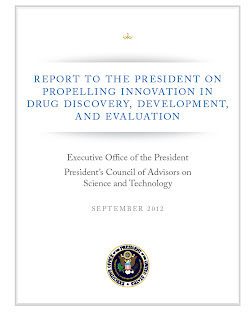All eyes were on the United Kingdom during the 30th Summer Olympic Games in London. The UK captivated the world, reminding us of its rich culture and history while delivering athletic thrills. Though this summer’s games provided reason enough to applaud the UK, its remarkable national commitment to biomedical innovation should garner equal praise. Here are three reasons why:
- The initiative to make all national health service (NHS) patient data available for research: In a move that will dramatically alter the landscape for medical and public health research in the UK, the British government plans to make electronic health records from the National Health Service (NHS) widely available for research by 2013. Prime Minister David Cameron announced the groundbreaking decision at the first Global Health Policy Summit held last month, saying the move is part of the UK’s effort to secure a global leadership position in biomedical research. The prime minister said his government will change the NHS data sharing policy from an opt-in basis to an opt-out standard, meaning anonymized patient data will be available for all patients who do not actively decline to participate. The opportunities this policy offers are vast, providing medical researchers access to patient data on an unprecedented scale and potentially delivering life-saving advances in our understanding of managing disease and preserving health.
- Leveraging olympic infrastructure for biomedical research: Creating a provident legacy from the London Olympic Games, the anti-doping facility, provided for the Games by GlaxoSmithKline and operated by King’s College, will be repurposed as a new medical research center focused on biomarker discovery and development of targeted therapies. Sponsored jointly by the United Kingdom’s Medical Research Council (MRC) and the Department of Health’s National Institute for Health Research (NIHR), the MRC-NIHR Phenome Centre will be a unique resource focused on analyzing the phenome, the collection of an organism’s expressed traits, including all the proteins and active cellular signaling pathways. Researchers will search for biomarkers that can help identify susceptibility to – and protection from – disease, and may lead to precisely targeted prevention and treatment strategies.
- Construction of the New Francis Crick Institute: Even as the massive undertaking of preparing for and hosting the Olympic Games was underway in London, construction of the new Francis Crick Institute, possibly Europe’s largest dedicated research laboratory building, was progressing simultaneously. Scheduled to open in 2015, the Francis Crick Institute will be home to 1,500 staff, including 1,250 scientists, and 120 research groups. The institute is the product of a six-way partnership between Cancer Research UK, the Medical Research Council, the Wellcome Trust, University College London, Imperial College London, and King’s College London. It is designed to attract leading scientific talent from around the world and will work collaboratively with United Kingdom hospitals and universities to study cancer, heart disease, infections, stroke, and immune disorders, illnesses linked to aging and obesity, and other medical issues. The Francis Crick Institute will play a key role in training the nation’s top scientists and in supporting the worldwide biomedical research mission.
FasterCures has been following the UK’s innovation efforts with interest. We were pleased to welcome Sir Michael Rawlins, Chairman of the National Institute of Health and Clinical Excellence (NICE), to last year’s Partnering for Cures meeting to talk about the difficult choices Brits have to make when it comes to deciding which new treatments and therapies to cover in a centralized, single-payer system. This year, we’re happy to have Chas Bountra, Chief Scientist for the Structural Genomics Consortium at University of Oxford coming to discuss its efforts to spearhead "open access" chemistry partnership – a new model for pre-competitive drug discovery in which the public and private sectors collaborate to generate potent and selective pharmacological inhibitors of human proteins that regulate epigenetic signalling, and commit to make these reagents available without restriction on use.








